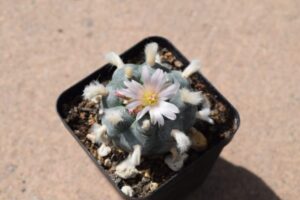Cooking with cactus can be an intriguing culinary venture. Whether you are a seasoned chef or a curious home cook, understanding how to prepare cactus for cooking will open up a world of unique flavors and health benefits. From its vibrant texture to its nutritional value, cactus, especially the well-known nopales and prickly pear, is a delightful ingredient. This guide delves into the essential steps and techniques for preparing cactus in a way that accentuates its best qualities.
Before diving into the preparation process, it is important to familiarize oneself with the specific types of cacti used in cooking.
Understanding Different Types of Edible Cactus
Nopales, the pads of the prickly pear cactus, are perhaps the most popular variety used in Mexican cuisine. These succulent pads are rich in fiber, vitamins, and antioxidants. The prickly pear, or tuna, is another edible cactus known for its bright fruit, which can be consumed raw or used in beverages and jams. Both types are abundant in nutrients and have a distinct taste that can add a refreshing element to various dishes.
Harvesting and Selecting Fresh Cactus
When selecting cactus for cooking, freshness is paramount. Look for vibrant, firm pads without browning or excessive blemishes. If you have access to a cactus garden or farmers’ market, consider harvesting your own nopales. Using gloves and tongs is crucial, as the pads are covered with tiny spines known as glochids. Ensure that you harvest only the pads that are young and tender, as older, harsher pads may be less palatable.
In purchasing cactus, seek options from reliable markets where the produce is handled with care. Popular choices typically include smooth-skinned nopales and vibrant prickly pears. Choose those that feel heavy for their size, as this usually indicates juiciness and freshness.
Tools and Equipment Necessary for Preparation
Before beginning the preparation, gather the right tools to ensure a smooth process. You’ll need a sharp knife, cutting board, and, ideally, a pair of kitchen gloves for handling the cactus. The gloves will protect your hands from the spines and make the process more comfortable. Additionally, a pot for boiling and a colander or strainer will be beneficial for rinsing the pads.
Preparing Nopales: A Step-by-Step Guide
The process of preparing nopales is relatively simple, but it does require attention to detail. Begin by thoroughly rinsing the cactus pads under cold water to remove any dirt or debris. This step is essential, as nopales can carry soil from the field to your kitchen.
Next, while wearing gloves, use a sharp knife to trim the edges of the nopales, removing any spines or glochids. Hold the pad in one hand and carefully slice away the spiny parts, ensuring you remove all of the small, embedded spines. Following this, you may choose to dice the pads into small pieces, julienne them into strips, or leave them whole, depending on your recipe.
Boiling the nopales is a common practice to eliminate any mucilaginous texture that may be present. Place them in a pot of boiling salted water and cook for approximately 10-15 minutes, or until tender but not mushy. Once cooked, drain them in a colander and allow them to cool before incorporating into your dishes. Boiling lessens their slimy consistency and enhances their flavor profile, rendering them more enjoyable in various applications.
The Art of Preparing Prickly Pears
Prickly pears offer a delightful sweetness that can be enjoyed in numerous culinary creations. When handling these fruits, the first step is to carefully remove the spines. This can be done by using a vegetable peeler or by holding the fruit with a fork while shaving off the skin. Adjustments may be made based on the fruit’s ripeness; ripe prickly pears yield more juice and are more forgiving in terms of additional handling.
Once the skin is removed, cut the fruit into halves or quarters to reveal the glistening inner flesh. The seeds can be left in or removed depending on your preference, as they are edible but may have a slightly gritty texture. This fruit can be used in salads, beverages, or simply enjoyed fresh.
Cooking with Cactus: Culinary Applications
Once you have prepared your cactus, the possibilities for utilizing it are vast. For nopales, consider incorporating them into traditional dishes like tacos, salads, or stir-fried vegetables. They pair well with ingredients such as tomatoes, onions, and lime, making them a versatile addition to various recipes.
Prickly pears, on the other hand, shine in desserts, syrups, or smoothies where their sweetness and vibrant color can really stand out. The juice can also be fermented to create unique alcoholic beverages or used in marinades for a sweet and tangy twist.
Incorporating cactus into your cooking turns everyday meals into extraordinary culinary experiences. As with all new ingredients, experimentation is encouraged; combining cactus with familiar flavors will create delectable concoctions that can delight the senses. Whether enjoyed in a traditional preparation or innovatively fused with contemporary cuisines, cactus undoubtedly adds flair and nutritional benefits to your repertoire.
Cooking with cactus is more than just a trend; it is an exploration of flavors, cultures, and health-conscious choices. With proper preparation, the unique taste and nutritional value of cactus can be highlighted, making it a cherished component of your culinary toolkit.
In summary, preparing cactus, whether nopales or prickly pear, involves careful selection, thorough cleaning, and appropriate cooking techniques that transform this often-overlooked ingredient into a delightful culinary experience. Embrace the journey of cooking with cactus and let it elevate your kitchen adventures.





Leave a Comment